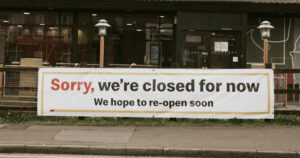
As governments around the world are under increased demands to reopen, leaders everywhere are making decisions in the face of staggering uncertainty and conflicting information. In many ways, the decisions that first closed down businesses and quarantined cities, although certainly difficult, were much easier exercises in short-term decision making and execution than those that leaders will have to make for the longer-term journey.
And now everyone is asking, what will this “new normal” look like?
Let’s start with what we know. As our coaches at Hogan Assessments will tell you, in order to gain something new and worthwhile in your life, you will inevitably face choices. You won’t lose weight without changing behaviors around your eating and activity levels. You won’t strengthen your family relationships without investing in quality time with your loved ones. You won’t learn a new language without reprioritizing your time in consistent study and practice.
For leaders, 2020 has thus far been an intensive exercise in making hard choices. I would hypothesize that, for both leaders and teams, the remainder of 2020 will be an exercise in cultivating appropriate strategic self-awareness to make choices that will carry their organizations and talent into the future.
In many of these forthcoming decisions, identifying the right choice and the wrong choice might be difficult. In those times, it will be critical for leaders to reflect on the appropriate questions:
- What did you have to let go of against your wishes in 2020? How have you been forced to change the way you lead? The way your team operates?
- Where are you still using approaches or processes that brought you and your team success in the past? Where are these working? Where are they not working?
- Are you paying attention to signals telling you that an approach or process isn’t working today? What are those signals?
Leading in a “new normal” season will require deliberate management of the tension between the “normal” and the “new.” At Hogan, we know that innate personality characteristics and motivators may lead some people to crave returning to the past, to the pragmatic, to solutions that have worked before, to the “normal.” These individuals often look for certainty, for steadiness, and for signals that remind them of past success. They might be hoping desperately to regain a sense of normalcy in their life. They might also be working diligently right now to apply processes or systems that brought them success in the past.
We also know that others naturally will find an abundance of freedom in the ambiguity. They will come up with new ideas or methodologies quickly, worrying little about appropriate application or execution. These creative innovators might be looking to drive significant change in the way they have operated before. Their comfort with ambiguity often frees them from a need for process and possibly even short-term expectations. If these individuals also have higher levels of ambition, they might be very quick to take on new challenges and run into the unknown.
In the second half of 2020, effective organizational leadership must balance these inevitable perspectives, deciding when to lean toward “normal” and when to lean toward “new,” and then lead others in that direction.
Our research on humility in leadership shows that the leaders with the most potential to effectively manage the tension through this next milestone will be those who are naturally open to coaching and feedback, as well as admitting when they make mistakes along the way. These humble leaders will quickly value and respect other points of view and new ways of thinking. They will help keep the focus on aligned team performance and a healthy organizational culture.
Humble leaders will also keep both the humanity and accountability in organizational processes in the coming months. They will keep lines of communication and therefore critical knowledge open. They will encourage sharing insights, and they will celebrate mistakes. Because of their focus on learning and development, humble leaders will raise up other leaders around them without being threatened or fearful of losing positional power or credibility.
At Hogan, we have seen time and time again that having a strategic self-awareness rooted in the science of personality provides leaders with a competitive advantage. Having this awareness across your team increases your organization’s competitive advantage. As we step into this season of our “new normal” and everything that it brings, that competitive advantage just may make the difference between companies that remain healthy in the coming months and those that do not.
The choices you make today will determine the strength you have tomorrow.


